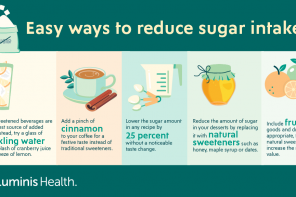Mindful eating is an approach that examines our eating behaviors, focusing on how our eating patterns make us feel. Focusing on the experience of eating and becoming in touch with our hunger, fullness and satisfaction signals are all mindful eating strategies. This approach helps us enjoy food for the pleasure it provides. You can do this by eating slowly, savoring the flavor and not simultaneously watching a screen, walking around the kitchen or driving a car.
Mindful eating apps can be a helpful resource in our quest for healthier eating habits, without putting all of the focus on calories consumed and burned. Let’s take a look at two that are currently available.
Ate: This app is visual, easy to use and fast. You can set your own specific eating goals, such as “eat healthier,” and the app will select specific steps to take toward your goal from a variety of behavior-based recommendations. The basic plan is free and this app is ideal for those who prefer accountability that comes with keeping a food record or counting calories.
Am I Hungry?: This app puts you in charge of your eating decisions without having to rely on restrictions and rules. It includes a hunger-fullness rating scale that lists strategies to help you understand why you might reach for foods without feeling hungry. With this knowledge, you can determine how to address the feeling, if necessary, with something other than food. For instance, perhaps you are thinking of eating food because you feel stressed.
Here are some additional tips to help you become a mindful eater:
- It all begins with your grocery list. Plan meals and then make a list. Do not stray from the list and do not go to the store hungry.
- Chew slowly and pay attention to the food, portion, flavor and smell of what you are eating. Put utensils down between bites and engage in conversation, if possible.
- Eat at a designated place, preferably the kitchen table with no distractions. Do not eat on the run, in the car, standing or while simultaneously doing another activity.
- Pay attention to your fullness and hunger cues. Sometimes we think we are hungry when we are thirsty, or perhaps you want a break from your workspace, so eating is an excuse to pause. However, ask yourself if you are actually hungry. It takes 20 minutes for your stomach to tell your brain you are full, so resist pushing away from the table full.
- Keep a food journal and note what you eat, how much and your level of hunger on a scale of one to 10. It is also important to not allow yourself to get famished, which can lead to accelerated eating and over consumption.
Mindful eating takes a little bit of practice, but it’s not impossible. Over time, the more you do it, the easier it’ll become and the more health benefits you will gain. It’s a way of helping you appreciate food rather that restricting it. So go ahead, reduce the distractions in your surroundings and go savor each flavorful bite. Happy mindful eating!
Ann Caldwell and Maureen Shackelford are nutritionists and registered dietitians at Luminis Health Anne Arundel Medical Center. To reach them, call 443-481-5555.




